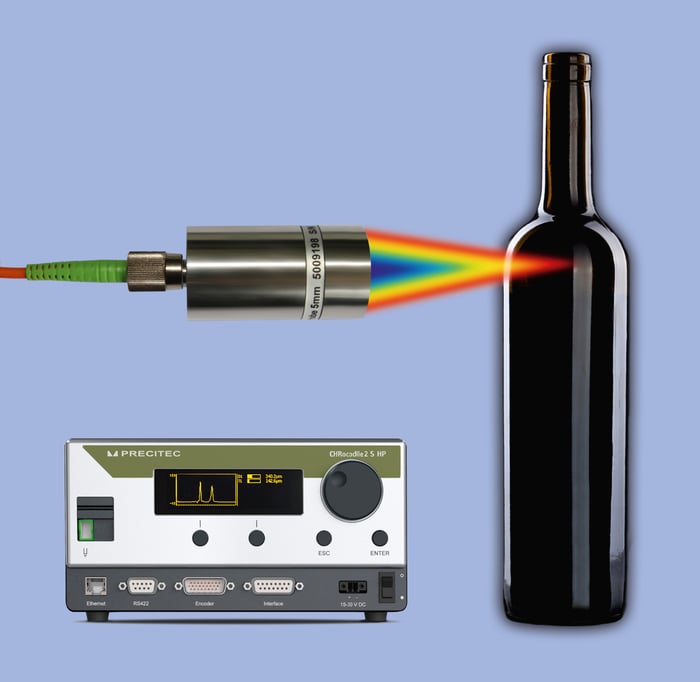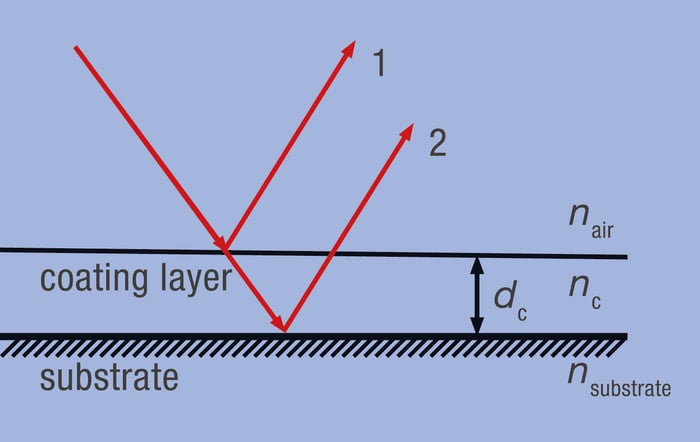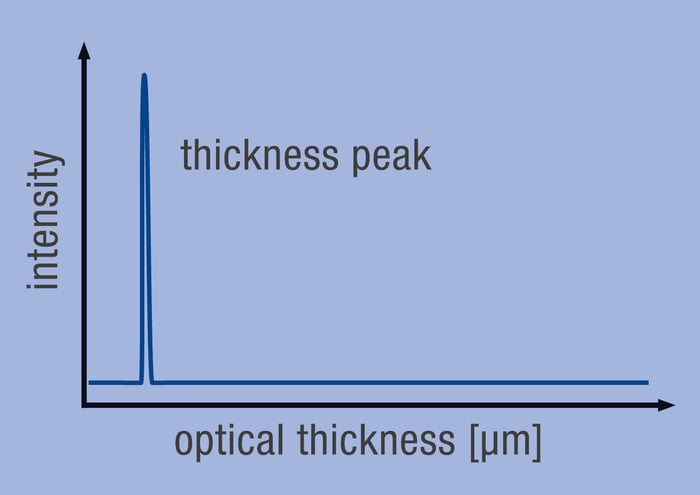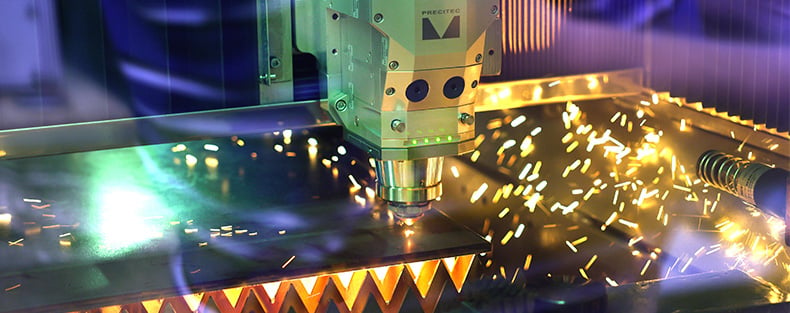- Home
- Glass inspection: Two optical metrologies make all the difference
Created on:
Glass inspection: Two optical metrologies make all the difference
In a challenging economic climate of soaring energy bills and rising raw material prices, glass manufacturers are keener than ever to avoid output wastage and maintain high quality standards. Inspecting glass products during production is key to enhancing process efficiency and optimising output quality. In this context, one of the innovative leaders in non-contact optical metrology with many years of experience in glass industry applications, Precitec Optronik, offers two different non-destructive technologies for distance or wall thickness measurements: chromatic confocal technology and optical coherence tomography (OCT).
Chromatic confocal – how it works
In this technology, a white light source is connected to the chromatic probe head via a fibre optical cable. The probe head splits the white light along the optical axis into its distinct wavelengths. With each wavelength focused at a different distance from the probe head, the distance between the wavelength focused the closest to the probe head and the one furthest away is the measuring range. If the surface of a sample is placed within the measuring range, only one wavelength will be reflected back through the probe head with the highest intensity and thus detected. As the intensity drops when the focus of the wavelength is further away from the sample surface, the detected signal has a specific half-width that defines the sensor’s axial resolution. When the sample surface is moved closer to or further away from the probe head, a different light colour is reflected most strongly towards the detector and the distance between the probe head and surface can be measured. Precitec Optronik’s product portfolio contains probes with ranges between 100 µm and almost 40 mm (in air).
Image 1: The principle of chromatic confocal technology for wall thickness inspection

Ideal for wall thickness inspection
This technology enables distances, topographies and profile scans to be measured with the highest axial and lateral resolution. By capturing a first peak from the outer surface of the container and a second peak from the inner surface this technology can measure wall thickness reliably, precisely and fast. In glass wall thickness measurements in a production environment, optimal results are obtained on glass containers. Moreover, this technology is robust and insensitive to harsh production environments. In distance measurement, chromatic confocal technology is ideal for inspecting the flatness or topography of glass wafers or flat glass. The most common applications for chromatic confocal sensors are glass wall thickness, waviness and flatness measurements, inspecting for inclusions, checking for form deviations in, for example, automotive glass, and cover glass inspection.
OCT – how it works
The OCT technology in interferometric sensors makes use of the interference between the light reflected by the top surface of a sample, and light reflected by the bottom surface of a sample. Because a broadband light source is used, the resulting interference pattern can be converted to thickness information via Fourier transform. The characterization of multilayer samples is also possible. For every thickness range between a few micrometres to several millimetres, there is a suitable sensor in the Precitec Optronik portfolio.
Image 2: A part of the light gets reflected at the air-coating interface (1), the rest at the coating-substrate interface (2).
The optical path difference leads to interference of the beams and is used to determine the thickness of the coating n_c. For clarity, the schematic shows the light with oblique incidence.

Image 3: The Fourrier transformed spectrum shows the thickness signal

Ideal for multi-layered wall thickness inspection
Sensors featuring this technology are available with infrared (IR) or visible light sources. IR light is particularly suitable for inspecting visibly non-transparent materials such as very dark glass. In addition, infrared light is suitable for multilayer systems of similar visibly materials The refractive indices of the different layers deviate more strongly in the IT spectrum, increasing the reflectivity of the interfaces and thus giving clearer thickness signals for the individual layers. A suitable application example is the measurement of head-up display windshields in an inline production environment. OCT sensors can measure multilayer systems reliably and accurately, even under harsh conditions.
Choosing the most suitable solution
Precitec Optronik has a large and varied portfolio of sensors featuring either of these two technologies, e.g. point sensors, line sensors or scanning sensors. Moreover, Precitec Optronik always supports customers in finding the most suitable technology and product set-up to solve complex and challenging measurement tasks in the glass industry.
You may also be interested in this

Laser cutting as a powerful cutting process - Advantages in short
Laser cutting is a powerful process that meets high quality standards and offers versatile applications in the.

Laser welding as manufacturing process
Laser welding is one of the joining manufacturing processes. A laser beam is used as a heat source to create a.

Laser cladding with wire: economical and environmentally friendly
Laser cladding is a promising technology for manufacturing high-quality components, repairing worn parts and coating.
